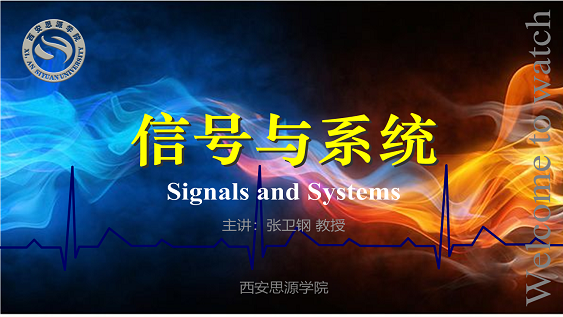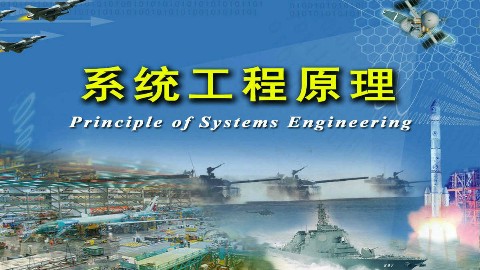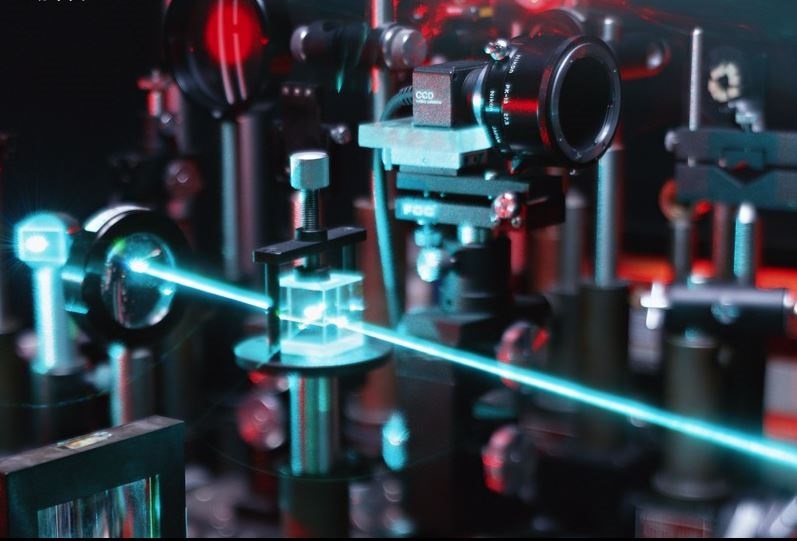
当前课程知识点:Structural Geology > The 7th Chapter Geotectonics > 7.2 Plate tectonic theory > 7.2 Plate tectonic theory
返回《Structural Geology》慕课在线视频课程列表
返回《Structural Geology》慕课在线视频列表
同学们
Hello, everyone!
这堂课我们将要来一起学习的是
We are going to learn together
板块构造理论
plate tectonics.
板块构造理论全面革新了
The theory of plate tectonics has revolutionized
固体地球的全球观
the holistic view of solid earth,
促进了地球系统概念的形成与发展
and promoted the formation and development of the concept of the earth system.
那板块构造理论的基本内涵是什么
What are the basics of plate tectonics theory?
简单来说
In simple terms,
板块构造学说将地球表层
the theory of plate tectonics believes the earth's surface
被活动带分割成大小不一的“块体”
is divided into "land masses" of different sizes by active belts,
其面积很大 厚度很小
which are broad but thin,
并且这些岩石圈块体会发生相互作用
and these lithospheric masses can interact with each other.
板块构造学说的论点
According to plate tectonics theory,
固体地球上层在垂向上可划分为
the upper layer of the solid earth can be vertically divided into
物理性质显著不同的两个圈层
two spheres with significantly different physical properties,
即上部的刚性岩石圈和下垫的塑性软流圈
namely, the upper rigid lithosphere and the underlying plastic asthenosphere.
刚性的岩石圈在侧向上
The rigid lithosphere is laterally
分成数量有限的大小板块
divided into a limited number of large and small plates,
它们漂浮在塑性较强的软流圈上
which float on the asthenosphere with strong plasticity
作大规模的运动
and move at large scale.
并按球面运动规律
According to the spherical motion law
不断改善着彼此之间的相对位置
they constantly adjust to have better relative positions.
板块边界分为分离扩张型 俯冲汇聚型
The plate boundary is divided into the divergent, convergence
和平移剪切型3种类型
and transform types.
地震 火山和各种构造活动
Earthquake, volcanism and various tectonic activities
大多发生在板块的边界上
most occur along the boundary of the plates,
板块内部是相对稳定的
and the interior of the plates is relatively stable.
板块的边缘则由于相邻板块的相互作用
The boundaries of plates due to the interaction between adjacent plates
而成为构造活动性强烈的地带
become zones with strong tectonic activity.
板块之间的相互作用
Interaction between plates
从根本上控制着各种地质作用的过程
fundamentally controls the processes of various geological processes,
同时也决定了全球岩石圈
and also determines how the global lithosphere
运动和演化的基本格局
moves and evolves on the whole.
板块在离散边界处的扩张增生
Expansion and accretion of plates at divergent boundaries
得到汇聚边界俯冲消减的完全补偿
can be completely compensated by subduction along convergent boundaries.
因此地球体积保持不变
Therefore, the volume of the earth remains unchanged.
板块构造学说的支持证据
Plate tectonics theory is evidenced by
除了大陆漂移说
continental drift
和海底扩张说的相应证据外
and seafloor spreading.
板块构造学说的支持证据
It is also supported
还包括了地震带的证据
by the evidence of seismic zones.
全球地震活动的空间分布很不均匀
The spatial distribution of global seismic activity is very uneven.
95%以上的地震集中在
More than 95% of earthquakes are concentrated in
环太平洋 阿尔卑斯-喜马拉雅
stripping seismic belts like the Pacific Rim, Alps-Himalayas
和大洋中脊等狭长的地震带内
and the mid-ocean ridges.
沿大洋中脊浅源地震明显积聚
Shallow-focus earthquakes obviously accumulate along mid-ocean ridges.
而在岛弧之下
Under island arcs,
则浅 中 深源地震均有分布
shallow, medium and deep earthquakes are all distributed.
地震的发生沿着一个倾斜的面排列分布
Earthquakes occur along an inclined plane.
其他还有如深海钻探证据
Other evidence includes deep sea drilling.
大洋钻探计划确认
The Ocean Drilling Program has confirmed
洋底年龄
the age of the ocean floor
随着离开洋中脊的距离增加而增大
increases as the distance from mid-ocean ridges increases.
热点
In hot spots,
线状延伸的岛链与板块移动的方向一致
linearly extending island chains are consistent with the direction of plate movement.
现代高精度大地测量
Modern high precision geodesy
使用卫星测量得到陆壳运动的
uses satellite measurements to obtain the high precision GPS velocity field
高精度GPS速度场
of the motion of the continental crust.
板块边界类型及其基本特征
Let’s talk about the plate boundary types and their basic characteristics.
根据板块边界的性质特征
According to the characteristics of plate boundaries
及板块间的相对运动方式
and the relative movement between plates,
可以将板块边界划分为离散型边界
the plate boundaries can be divided into divergent,
汇聚型边界和转换型边界三种基本类型
convergent, and transform boundaries.
离散型边界
Divergent boundaries occur
相邻两板块作垂直于边界的背离运动
when two adjacent plates slide apart from each other in a direction perpendicular to the boundaries.
其整体处于拉张应力状态
On the whole, the boundaries are under tension stress,
地震以正断层型的浅震为主
and cause mainly normal fault shallow earthquakes.
该类型边界的两侧地壳性质为
The crust on both sides of this type of boundary are
陆壳-陆壳或者洋壳-洋壳
is both continental or oceanic.
其在岩石圈演化中表现为
In the lithosphere evolution, it functions
大陆岩石圈的分裂及大洋岩石圈的生长
as division of continental lithosphere and growth of oceanic lithosphere.
实例
Examples include
大陆裂谷带如东非裂谷带
a continental rift zone of the East African rift zone,
大洋裂谷带如大洋中脊
and the oceanic rift zones of mid-ocean ridges.
汇聚型边界
Convergent boundaries occur
相邻两板块作垂直于边界的相向运动
when two adjacent plates slide toward each other, perpendicular to the boundaries.
整体处于挤压应力状态
On the whole, they are under compressional stress,
地震以逆冲断层型为主
causing mainly thrust fault earthquakes.
其类型可以包括浅震 中震和深震
The types may include shallow, middle, and deep earthquakes,
并随着深部发生变化
and change along with the depth.
其在岩石圈演化中表现为
In the lithosphere evolution, they are manifested as
大洋岩石圈的消亡 大陆岩石圈的生长
the extinction of oceanic lithosphere and the growth of continental lithosphere.
根据边界两侧的地壳性质可以分为
According to the nature of the crust on both sides of the boundaries, they can be divided into
洋壳-洋壳俯冲带
oceanic-oceanic subduction zones,
洋壳-陆壳俯冲带
oceanic-continental subduction zones,
和陆壳-陆壳型碰撞带
and continental-continental collision zones.
构造带 实例
Examples of tectonic belts include
洋内沟弧体系 陆缘弧沟系
intra-oceanic arc-trench systems, marginal arc-trench systems,
喜马拉雅 阿尔卑斯等
Himalayan, and Alps.
转换型边界
Transform boundaries occur
相邻两板块作平行于边界的走滑运动
when two adjacent plates slide past each other, parallel to the boundaries.
整体为剪切应力状态
On the whole, they are in shear stress state,
地震以走滑型浅震为主
causing mainly strike-slip shallow earthquakes.
其不发生岩石圈的生长或消亡
They do not cause lithosphere growth or extinction.
该类型边界可以发生在
This type of boundary can occur at
各种类型的地壳之间
between various types of crust.
构造带实例
Examples of tectonic belts
转换断层如圣安德烈斯断层
are transform faults like San Andres Fault.
全球板块划分
Next, let’s turn to the division of global plates.
勒皮雄的6板块划分方案
Le Pichon divided the Earth surface into 6 plates,
欧亚板块 非洲板块 美洲板块
including the Eurasia plate, Africa plate, America plate,
太平洋板块 印度板块 南极洲板块
Pacific plate, India plate, and Antarctica plate.
当前较为流行的12板块划分方案
The currently popular 12-plate division
将美洲板块分成南美洲 北美洲板块
divides the American plate further into the South America and North America plates,
增加5个新板块
and add 5 new plates,
纳兹卡板块 可可斯板块
Nazca plate, Cocos plate,
加勒比海板块 菲律宾海板块 阿拉伯板块
Caribbean plate, Philippine plate, and Arabian plate.
威尔逊旋回
The Wilson Cycle
1974年由J. F. 杜威和
was proposed by J. F Dewey
K. C. A. 伯克提出
and K.C.A. Burke in 1974,
为纪念加拿大地质学家
in memory of Canadian geologist
J. T.威尔逊而命名
J. T. Wilson.
威尔逊旋回是大陆岩石圈在水平方向上的
The Wilson Cycle describes
彼此分离与拼合运动的一次全过程
a whole process of opening and closing of continental lithosphere in the horizontal direction.
即大陆岩石圈由大陆裂谷开始
Starting from the continental rift,
以裂谷为生长中心
which is the center of growth,
逐渐形成雏形洋区和洋中脊
the continental lithosphere gradually forms embryonic oceanic zones and mid-ocean ridges,
进一步扩张出现洋盆而成为大洋
and further expands into an ocean basin, and finally an ocean appears.
此后大洋岩石圈
Afterwards, the oceanic lithosphere
向两侧的大陆岩石圈下俯冲 消亡
subducts to the continental lithosphere on both sides and goes extinct.
洋壳进入地幔而重熔
The oceanic crust enters the mantle and remelts.
从而洋盆缩小
Thus the ocean basin shrinks
继续发展下去
Further,
发生两侧的大陆逐渐接近 碰撞
the continents on both sides gradually approach and collide,
形成造山带 遂拼合成大陆
forming orogenic belts which merge into a continent.
阶段
There are stages of
萌发期→幼年期→成年期
the embryonic stage→the young stage→ Adult Period
→衰落期→终结期→遗迹期
→the subduction stage → the terminal stage → the end stage.
实例
The stages are manifested by
东非裂谷→红海亚丁湾→大西洋
the East African Rift Valley → Gulf of Aden in Red Sea → Atlantic Ocean
→太平洋→地中海→喜马拉雅山
→ Pacific Ocean → Mediterranean Sea → Himalayas, respectively.
威尔逊旋回是重建古大陆的基础
The Wilson cycle is the foundation of reconstructing ancient continent.
重建古大陆是有一定难度的
It is difficult to rebuild the ancient continent
因为前中生代的洋底特征已经消失
because the pre-Mesozoic ocean floor features have disappeared,
古大陆已经支解破碎改造
the ancient continent has been disintegrated and reformed,
古大陆边缘及其形态已经消亡
the ancient continental margin and its shape have disappeared,
碰撞带岩石记录已经被破坏消毁等
and rock records in the collision zones have been destroyed, etc..
-Geological mysteries hidden in structural geology
--Geological mysteries hidden in structural geology
-Discussion: What phenomena in our daily life are related to Structural Geology?
-1.1 Distinguish the top and bottom of bedding by recognizing the primary structure of sedimentary s
--1.1 Distinguish the top and bottom of bedding by recognizing the primary structure of sedimentary
-1.2 Characteristics of horizontal strata
--1.2 Characteristics of horizontal strata
-1.3 Attitude and its expression for planar and linear structures
--1.3 Attitude and its expression for planar and linear structures
-1.4 Patterns and thickness of outcrop of rock beddings
--1.4 Patterns and thickness of outcrop of rock beddings
-Discussion: How to apply the V rule in structural analysis
-Discussion: When observing geological phenomena in the field, how to distinguish whether the rock se
-Quiz 1
-Assignment
-2.1 Parallel unconformity and its characteristics
--2.1 Parallel unconformity and its characteristics
-2.2 Angular unconformity and its characteristics
--2.2 Angular unconformity and its characteristics
-2.3 Research on unconformity
--2.3 Research on unconformity
-Discussion: What kind of tectonic backgrounds do parallel unconformity and angular unconformity repr
-Quiz 2
-assignment 2
-3.1 Concepts of force and stress
--3.1 Concepts of force and stress
-3.2 Deformation and strain
-3.3 deformation stages of rocks
--3.3 deformation stages of rocks
-3.4 Factors affecting deformation
--3.4 Factors affecting deformation
-Discussion: There is an old saying "constant dropping wears away a stone", which deformation factor
-Quiz 3
-Assignment 3
-4.1 Geometrical elements of folds
--4.1 Geometrical elements of folds
-4.2 Morphological description of folds-part I
--4.2 Morphological description of folds-part I
-4.3 Morphological description of folds-part II
--4.3 Morphological description of folds-part II
-4.4 Special fold types
-4.5 Fold combination types
-4.6 Single-layer buckling folding
--4.6 Single-layer buckling folding
-4.7 Multi-layer buckling folding
--4.7 Multi-layer buckling folding
-4.8 Other folding
-4.9 Study on folds
-Discussion: Are folds commonly accompanied by faults? Why?
-Discussion: Which signs can be used to identify folds in the field?
-Quiz 4
-Assignment 4
-5.1 Classification of joints by geometric features
--5.1 Classification of joints by geometric features
-5.2 Characteristics of tension joints and shear joints
--5.2 Characteristics of tension joints and shear joints
-5.3 Characteristics of structural joints and non-structural joints
--5.3 Characteristics of structural joints and non-structural joints
-5.4 Staging and matching of joints
--5.4 Staging and matching of joints
-5.5 Preparation and analysis of rose diagrams of joints
--5.5 Preparation and analysis of rose diagrams of joints
-Discussion: Which kind of rock may joints prevail in?
-Discussion: What is the relationship between joints and oil and gas exploration
-Quiz 5
-Assignment 5
-6.1 Fault geometrical elements
--6.1 Fault geometrical elements
-6.2 Classification of faults
--6.2 Classification of faults
-6.3 Normal fault and normal fault system
--6.3 Normal fault and normal fault system
-6.4 Reverse fault and reverse fault system-part I
--6.4 Reverse fault and reverse fault system-part I
-6.5 Reverse fault and reverse fault system-part II
--6.5 Reverse fault and reverse fault system-part II
-6.6 Strike-slip fault and strike-slip fault system
--6.6 Strike-slip fault and strike-slip fault system
-6.7 Anderson theory of faulting
--6.7 Anderson theory of faulting
-6.8 Identification signs of faults
--6.8 Identification signs of faults
-Discussion: In recent years, earthquakes occurred frequently. According to your knowledge and unders
-Quiz 6
-Assignment 6
-7.1 The concept and development history of tectonics
--7.1 The concept and development history of tectonics
-7.2 Plate tectonic theory
-7.3 Sedimentary basins under plate tectonic theory




